|
Freshwater Mussel PhotosThese freshwater mussel photos were taken by me at the Upper Sioux Agency state park on hwy 67 by Granite Falls, Minnesota, near my childhood home.
These mussels are found in the Minnesota River. The Upper Sioux Agency also provided this information about American mussels.
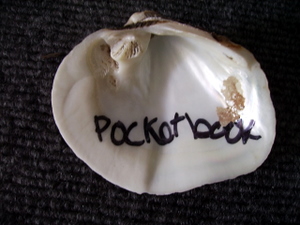 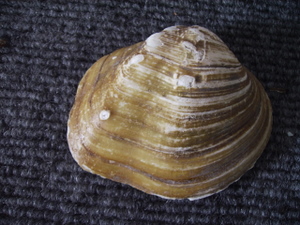 Pocketbook Mussel
Growing up overlooking the gorgeous Minnesota River valley has greatly influenced my life. And would you believe it? God has blessed me in my adult life with a view of the Mississippi River valley in eastern Iowa. I know I take this for granted and forget to appreciate the fact that literally every window in our large home has a picturesque "Grant Wood" view. 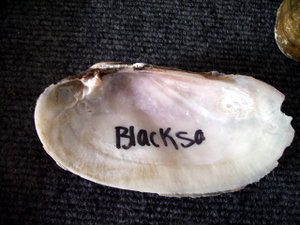 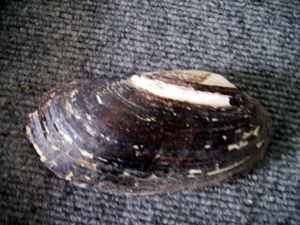 Blacksa Mussel
Common Freshwater Mussel Species1. Plain pocketbook (Lampsillis caridum) 2. Giant floater (Pyganodon grandis) 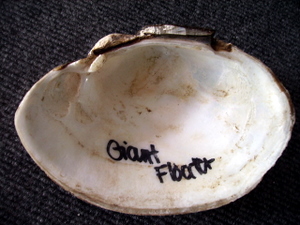 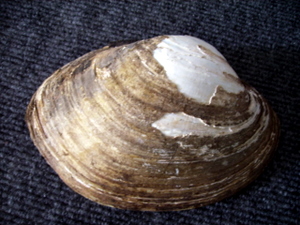 Giant Floater 3. White heelsplitter (Lasmigona complanata) 4. Pimpleback (Quadula pustulosa) 5. Mapleleaf (Quadrula quadrula) 6. Wabash pigtoe (Fusconaia flava) 7. Threeridge (Amblema plicata) Uncommon Mussel Species8. Pistolgrip (Tritogonia verrucosa) 9. Elktoe (Alasmidonta marginata) 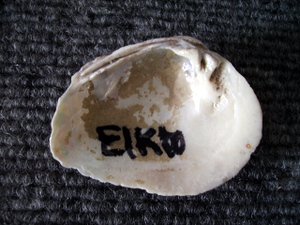 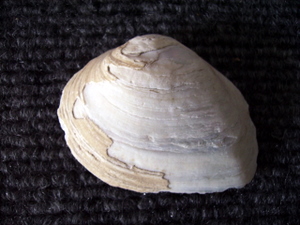 Elkto Mussel
10. Fluted-shell (Lasmigona costata) Have you ever heard of Purple Wartyback, Pink Heelsplitter, Black Sandshell, or Lilliput? All are Minnesota freshwater mussels.
Imagine these mussels: Hickory Nut, Snuffbox, and Spectacle Case. Or these: Washboard, Pistol Grip and Pimple Back. Butterfly, Elephant-Ear, Monkey Face, Elk Toe, Deer Toe, and Fawn's Foot, live in the Minnesota River too. As their names suggest, mussels can be eye-catching, yet they remain unfamiliar to most people because they spend their lives partially buried in river and lake bottoms, where they can be mistaken for rocks.
When does it "clam up"?In defense the freshwater mussel "clams up" or pulls in its foot and siphons and locks shut, using two stong adductor muscles. 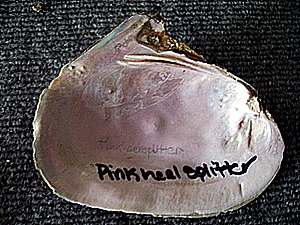 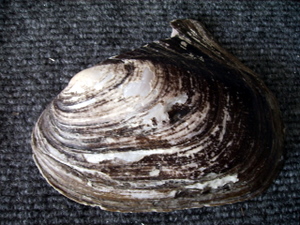 Pink Heelplitter How long do they live?Some fresh water mussel species can grow older than 100 years. Some only live a few years. Most live 10 to 40 years. Much like counting the rings on a tree, you can estimate a mussel's age by counting the rings, or annuli, that form on its shell each winter when growth slows or stops. 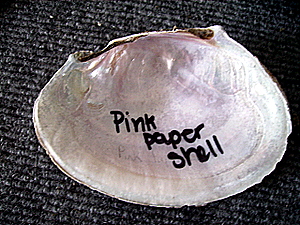 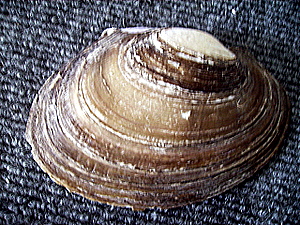 Pink Paper Shell
How do fresh water mussels eat?Mussels prefer streams, rivers, and lakes with wind-driven currents because the flowing waters help bring in food particles and oxygen and carry away wastes. A mussel can bury itself in the river or lake bottom with only its siphons poking up into the water. Its valves open to extend its incurrent siphon to take in water, oxygen, and microscopic food particles--plankton and detritus. The food sticks to the lining of its gills, and hair lie cilia slowly sweep the tidbits into its mouth. Its excurrent siphon expels filtered water and waste back into the river.
Mussels live on every continent except Antarctica. These animals provide food for fish and wildlife, they clean water by filtering out particles to eat, and they show a river's health by reacting to pollution and other changes in the water. 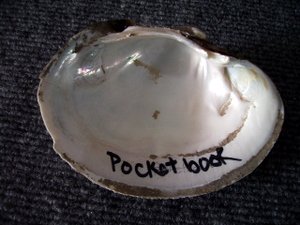 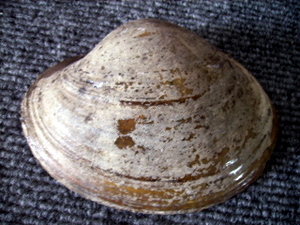 Pocketbook Freshwater Mussel What's in a name?People often mistakenly use the term clam when referring to a freshwater mussel. Mussels and clam are both bivalve mollusks, but they differ in important ways. Mussels have parasitic young, but clams to not. For example, Minnesota has only a few species of tiny clams--pea clams and fingernail clams. 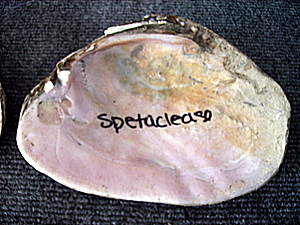 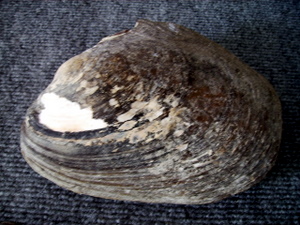 Spetacleasa Freshwater Mussel
American fresh water mussels form the bulk of pearl nuclei around the world for pearls cultured in many parts of the world. So...even if the USA is not a major cultured pearl grower....we do our part in supplying the world with these amazing gems. Learn more about North American mollusks here. And try tasty mussel recipes. These lowly creatures have provided a bond between my childhood home and present location in Muscatine, Iowa, where lots of pearl buttons were made years ago.
Pearl clamming for the freshwater mussel was done much the same on the Mississippi River as other North American Rivers.
|






